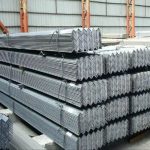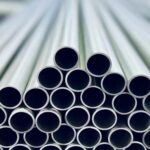HEA HEB IPE Steel Profile H beam S355JR/S355JO
What is H beam?
Structural steel has been used extensively in the construction of commercial buildings since the first steel-framed building, the Rand Mcnally Building erected in 1890.
Since then, steel has been used for major construction projects. The availability of steel makes it much easier to use.
First, it bonds well to concrete and has many features that make it even better than concrete when it comes to construction projects.
Steel is still one of the preferred material options in construction, as it takes less time to build and contributes to a perfect combination of lightness, high strength, and ease of manufacture.
GRADE:
S355JR S355JO S355J2+N S355K2 S355G1 S355G4 S355G11 S355G12 S355JOW S355J2W 16Mo3 S355ML S460M
SURFACE: black, galvanized or sand blasted + primer
Chemical Composition of S355JR/J0/J2 H section beam:
| Element Name | C | Mn | Si | P | S | N | Cu | CEV |
S355jr | 0.24 | 1.06 | 0.55 | 0.04 | 0.04 | 0.012 | 0.55 | 0.45-0.47 |
S355j0Content(max %) | 0.2-0.22 | 1.60 | 0.55 | 0.035 | 0.035 | 0.012 | 0.55 | 0.45-0.47 |
S355j2Content(max %) | 0.20-0.22 | 1.60 | 0.55 | 0.030 | 0.030 | - | 0.55 | 0.45-0.47 |
Physical properties of S355jr/j0/j2 H section beam:
| Thickness(mm) | To 3 | 3-100 | 100-150 | 150-250 |
S355jr | 510-680 | 470-630 | 450-600 | 450-600 |
S355j0 | 510-680 | 470-630 | 450-600 | 450-600 |
S355j2 | 510-680 | 470-630 | 450-600 | 450-600 |
HEA 100---HEA 1000
HEB 100---HEB 1000
| HEA | Dimensions mm | Cross Section cm² | Section Modulus cm³ | Weight Kg/m | ||||
|---|---|---|---|---|---|---|---|---|
| h | b | s | t | F | Wx | Wy | ||
| HEA 100 | 96 | 100 | 5 | 8 | 21.24 | 72.76 | 26.7 | 16.7 |
| HEA 120 | 114 | 120 | 5 | 8 | 25.34 | 106.3 | 38.4 | 19.9 |
| HEA 140 | 133 | 140 | 5.5 | 8.5 | 31.42 | 155.4 | 55.6 | 24.7 |
| HEA 160 | 152 | 160 | 6 | 9 | 38.77 | 220.1 | 76.9 | 30.4 |
| HEA 180 | 171 | 180 | 6 | 9.5 | 45.25 | 293.6 | 102.7 | 35.5 |
| HEA 200 | 190 | 200 | 6.5 | 10 | 53.83 | 388.6 | 133.6 | 42.3 |
| HEA 220 | 210 | 220 | 7 | 11 | 64.34 | 515.2 | 177.7 | 50.5 |
| HEA 240 | 230 | 240 | 7.5 | 12 | 76.84 | 675.1 | 230.7 | 60.3 |
| HEA 260 | 250 | 260 | 7.5 | 12.5 | 86.82 | 836.4 | 282.1 | 68.2 |
| HEA 280 | 270 | 280 | 8 | 13 | 97.26 | 1013 | 340.2 | 76.4 |
| HEA 300 | 290 | 300 | 8.5 | 14 | 112.5 | 1260 | 420.6 | 88.3 |
| HEA 320 | 310 | 300 | 9 | 15.5 | 124.4 | 1479 | 465.7 | 97.6 |
| HEA 340 | 330 | 300 | 9.5 | 16.5 | 133.5 | 1678 | 495.7 | 105 |
| HEA 360 | 350 | 300 | 10 | 17.5 | 142.8 | 1891 | 525.8 | 112 |
| HEA 400 | 390 | 300 | 11 | 19 | 159 | 2311 | 570.9 | 125 |
| HEA 450 | 440 | 300 | 11.5 | 21 | 178 | 2896 | 631 | 140 |
| HEA 500 | 490 | 300 | 12 | 23 | 197.5 | 3550 | 691.1 | 155 |
| HEA 550 | 540 | 300 | 12.5 | 24 | 211.8 | 4146 | 721.3 | 166 |
| HEA 600 | 590 | 300 | 13 | 25 | 226.5 | 4787 | 751.4 | 178 |
| HEA 650 | 640 | 300 | 13.5 | 26 | 241.6 | 5474 | 781.6 | 190 |
| HEA 700 | 690 | 300 | 14.5 | 27 | 260.5 | 6241 | 811.9 | 204 |
| HEA 800 | 790 | 300 | 15 | 28 | 285.8 | 7682 | 842.6 | 224 |
| HEA 900 | 890 | 300 | 16 | 30 | 320.5 | 9485 | 903.2 | 252 |
| HEA 1000 | 990 | 300 | 16.5 | 31 | 346.8 | 11190 | 933.6 | 272 |
Dimensions of Steel Beams Type HEB as per European standard EN 10025-1/2.

| HEB | Dimensions mm | Cross Section cm² | Section Modulus cm³ | Weight Kg/m | ||||
|---|---|---|---|---|---|---|---|---|
| h | b | s | t | F | Wx | Wy | ||
| HEB 100 | 100 | 100 | 6 | 10 | 26.04 | 89.9 | 33.5 | 20.4 |
| HEB 120 | 120 | 120 | 6.5 | 11 | 34.01 | 144.1 | 52.9 | 26.7 |
| HEB 140 | 140 | 140 | 7 | 12 | 42.96 | 215.6 | 78.5 | 33.7 |
| HEB 160 | 160 | 160 | 8 | 13 | 54.25 | 311.5 | 111.2 | 42.6 |
| HEB 180 | 180 | 180 | 8.5 | 14 | 65.25 | 425.7 | 151.4 | 51.2 |
| HEB 200 | 200 | 200 | 9 | 15 | 78.08 | 569.6 | 200.3 | 61.3 |
| HEB 220 | 220 | 220 | 9.5 | 16 | 91.04 | 735.5 | 258.5 | 71.5 |
| HEB 240 | 240 | 240 | 10 | 17 | 106 | 938.3 | 326.9 | 83.2 |
| HEB 260 | 260 | 260 | 10 | 17.5 | 118 | 1148 | 395 | 93 |
| HEB 280 | 280 | 280 | 10.5 | 18 | 131.4 | 1376 | 471 | 103 |
| HEB 300 | 300 | 300 | 11 | 19 | 149.1 | 1678 | 570.9 | 117 |
| HEB 320 | 320 | 300 | 11.5 | 20.5 | 161.3 | 1926 | 615.9 | 127 |
| HEB 340 | 340 | 300 | 12 | 21.5 | 170.9 | 2156 | 646 | 134 |
| HEB 360 | 360 | 300 | 12.5 | 22.5 | 180.6 | 2400 | 676.1 | 142 |
| HEB 400 | 400 | 300 | 13.5 | 24 | 197.8 | 2884 | 721.3 | 155 |
| HEB 450 | 450 | 300 | 14 | 26 | 218 | 3551 | 781.4 | 171 |
| HEB 500 | 500 | 300 | 14.5 | 28 | 238.6 | 4287 | 841.6 | 187 |
| HEB 550 | 550 | 300 | 15 | 29 | 254.1 | 4971 | 871.8 | 199 |
| HEB 600 | 600 | 300 | 15.5 | 30 | 270 | 5701 | 902 | 212 |
| HEB 650 | 650 | 300 | 16 | 31 | 286.3 | 6480 | 932.3 | 225 |
| HEB 700 | 700 | 300 | 17 | 32 | 306.4 | 7340 | 962.7 | 241 |
| HEB 800 | 800 | 300 | 17.5 | 33 | 334.2 | 8977 | 993.6 | 262 |
| HEB 900 | 900 | 300 | 18.5 | 35 | 371.3 | 10980 | 1054 | 291 |
| HEB 1000 | 1000 | 300 | 19 | 36 | 400 | 12890 | 1090 | 314 |
Difference Between H-Beam and I-Beam
Basics of H-Beam and I-Beam
The H beam, as the name suggests, is an H-shaped structural member made of rolled steel and is known as a wide flange beam.
It is one of the most used structural members in the United States. It looks like an ‘H’ over the cross-section and is incredibly strong and has a larger surface area in the cross-section of the beam.
I beam, on the other hand, is also known as an H beam, but it looks like an ‘I’ of the cross-section. It is basically a beam of rolled steel or a beam with a cross-section in the form of the capital letter I.










